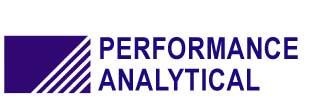Our oil analysis methods have been developed by our engineers and chemists to most effective monitor the condition of off-road equipment. Off road equipment faces the most grueling challenges of motorized equipment. We test the condition of your equipment as well as the condition of the oil. We also understand that your equipment has important systems besides the engine, so we recommend the testing of all major lubricated compartments, including the engine, transmission, hydraulic, and differentials. Following is a brief description of our standard tests offered as a part of the FAST program.
Wear Analysis monitors wear by detecting, identifying and assessing the amount and type of wear metals elements in the oil. The rate at which war metal particles increase from sample to sample is as important as the particles in the oil. Methods commonly used by others miss particles larger than 1 micron, the very particles that indicate active wear pattern. Our wear metal method is designed to detect equipment in active wear with the analysis of 18 metals, not 9 commonly tested by some laboratories.
Oil Condition Analysis determines the loss of the oil’s lubrication properties. With the use of a FTIR spectrometer the used oil sample is compared to a new oil properties. The use of the Total Base Number and Total Acid Number tests lets you know the remaining useful life of your oil. This data gives you the knowledge to manage your drain intervals. This test allow us to determine the extent that the oil has deteriorated. This is determined by the oils oxidation, nitration, sulfation and soot levels.
Oil Contamination Analysis determines the presence of external contaminants like Fuel, water or glycol contamination. Fuel dilution reduces the oil viscosity and destroys its lubricating properties. Fuel dilution beyond 4% by volume can lea to piston rings sticking and the failure of the engine bearings. Coolant contamination causes rapid oxidation of the oil and will lead to the a major engine failure if not promptly resolved. Water contamination will cause the oil to form a sludge which can plug filters. Oil contaminated with water will cause extreme heating leading to reduced component or rapid failure.


